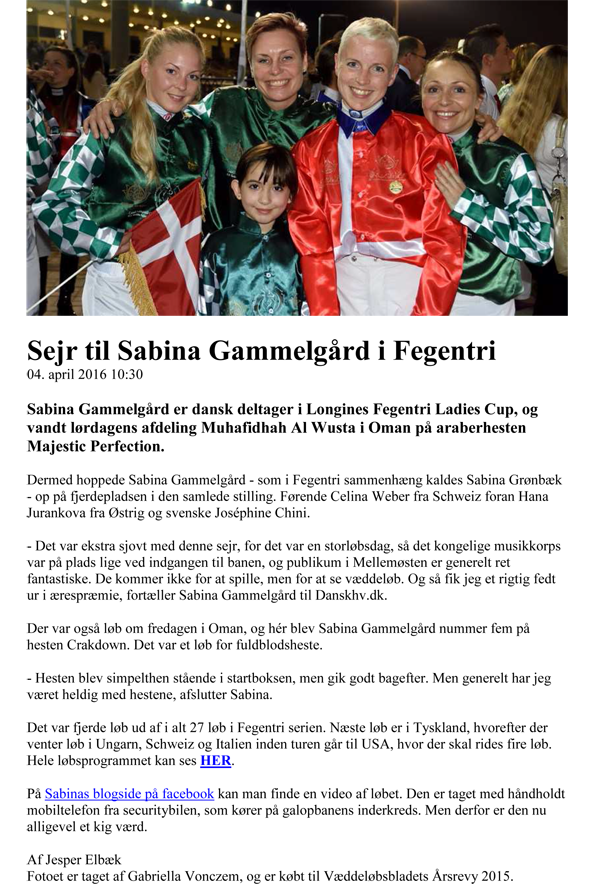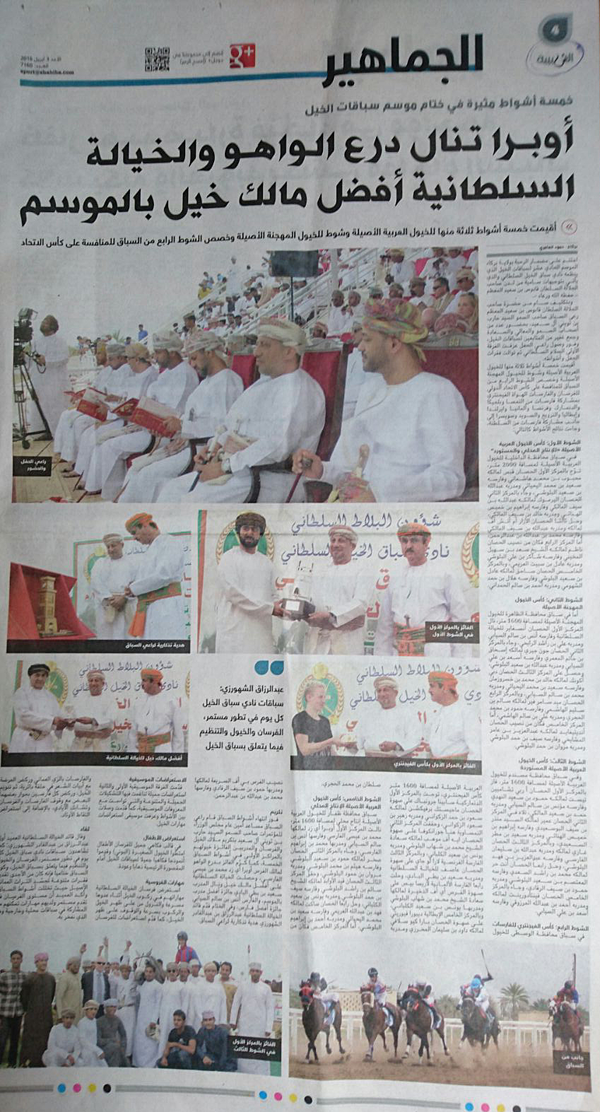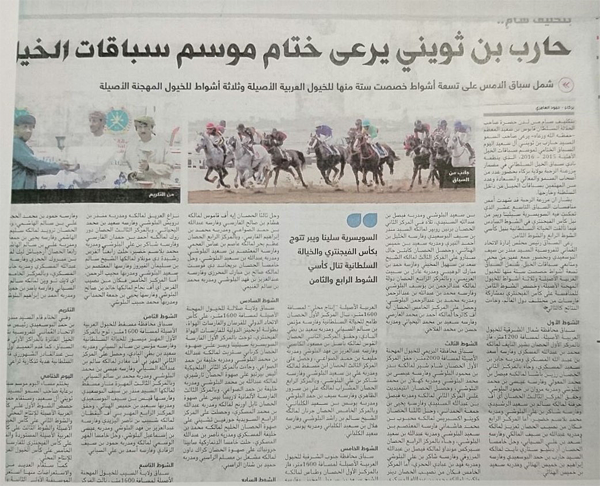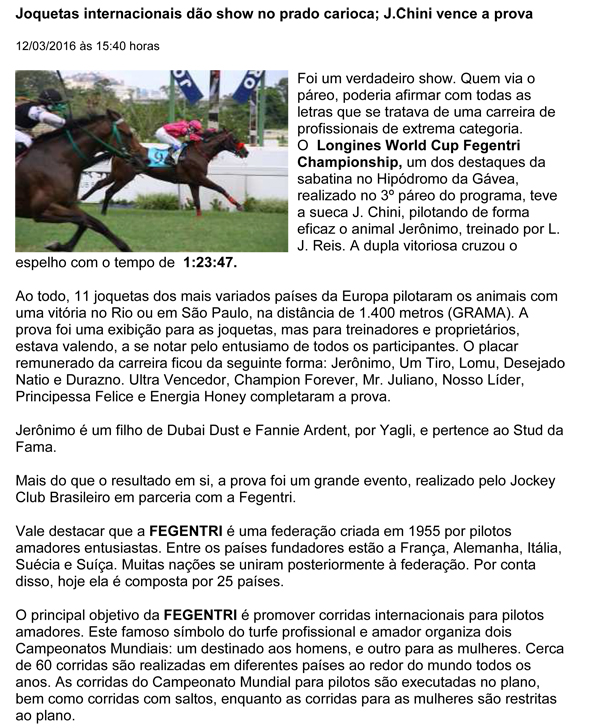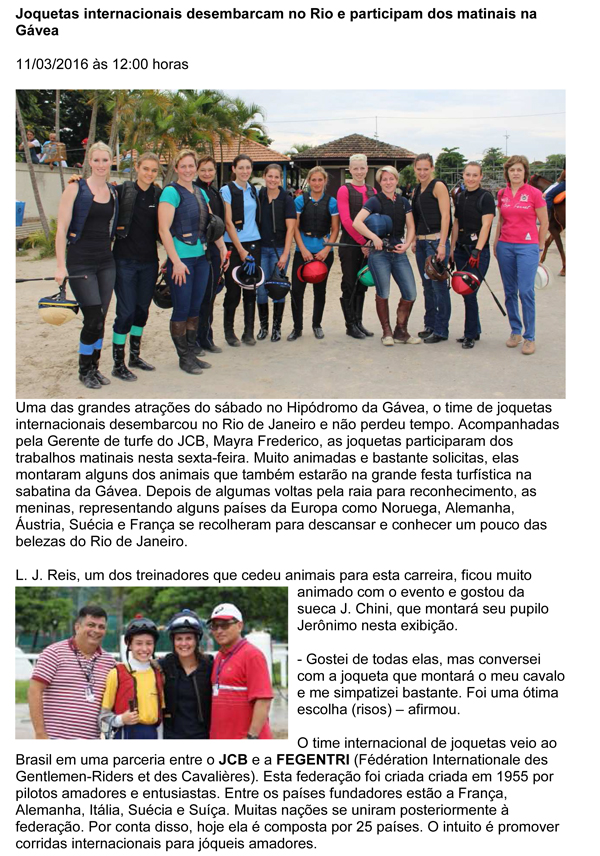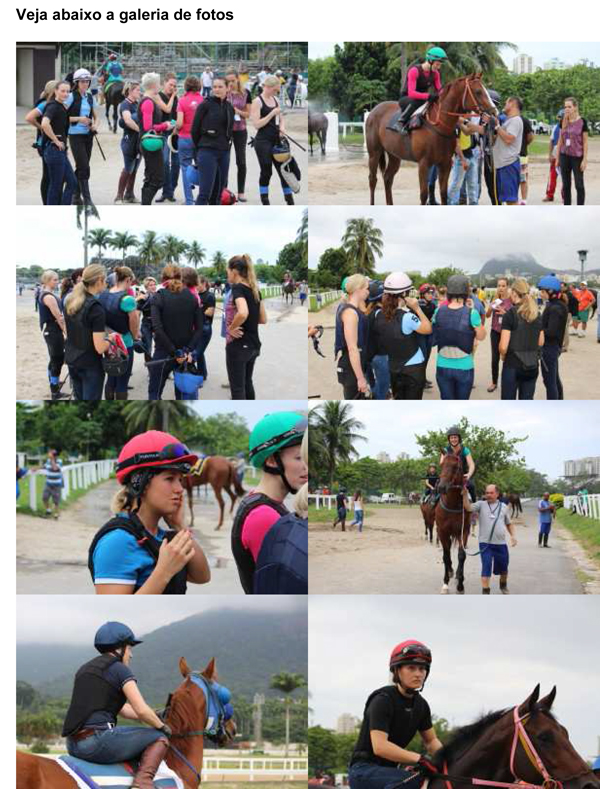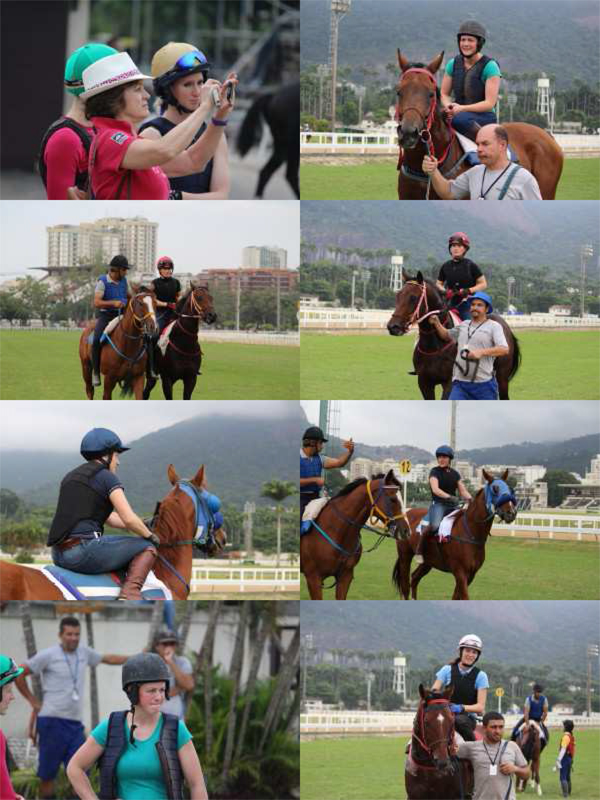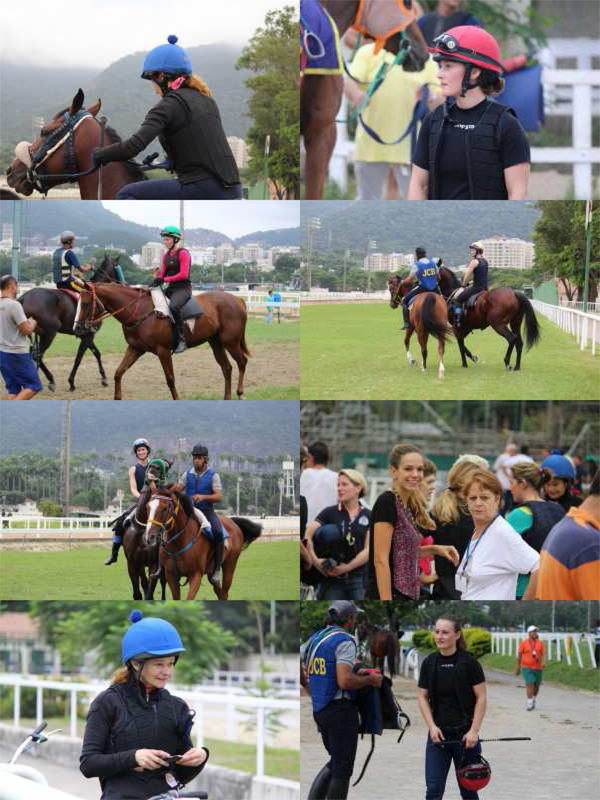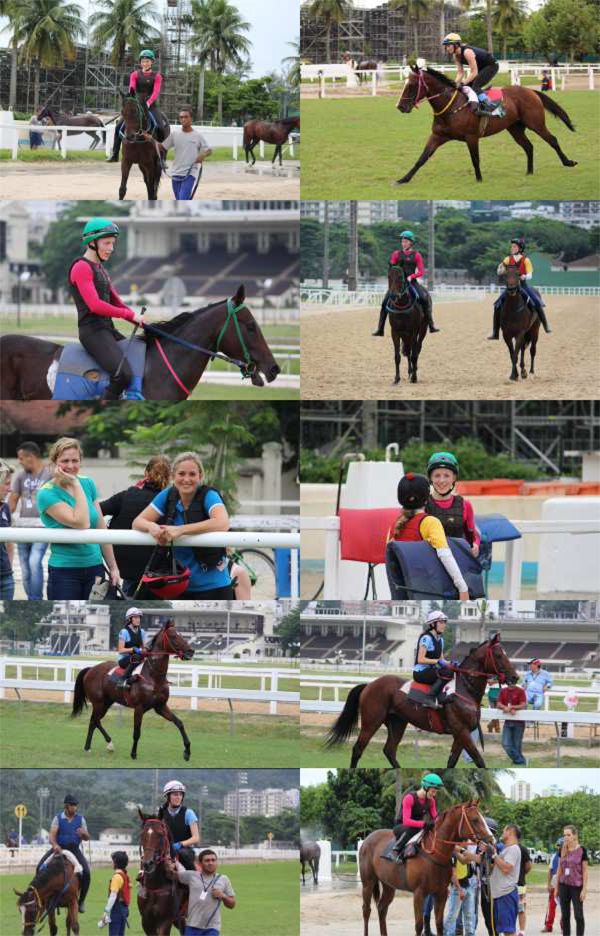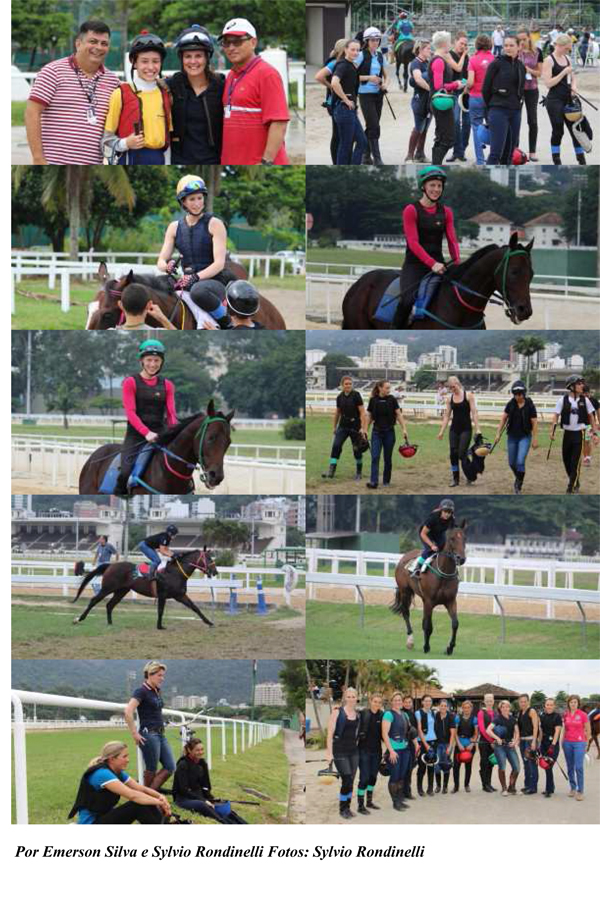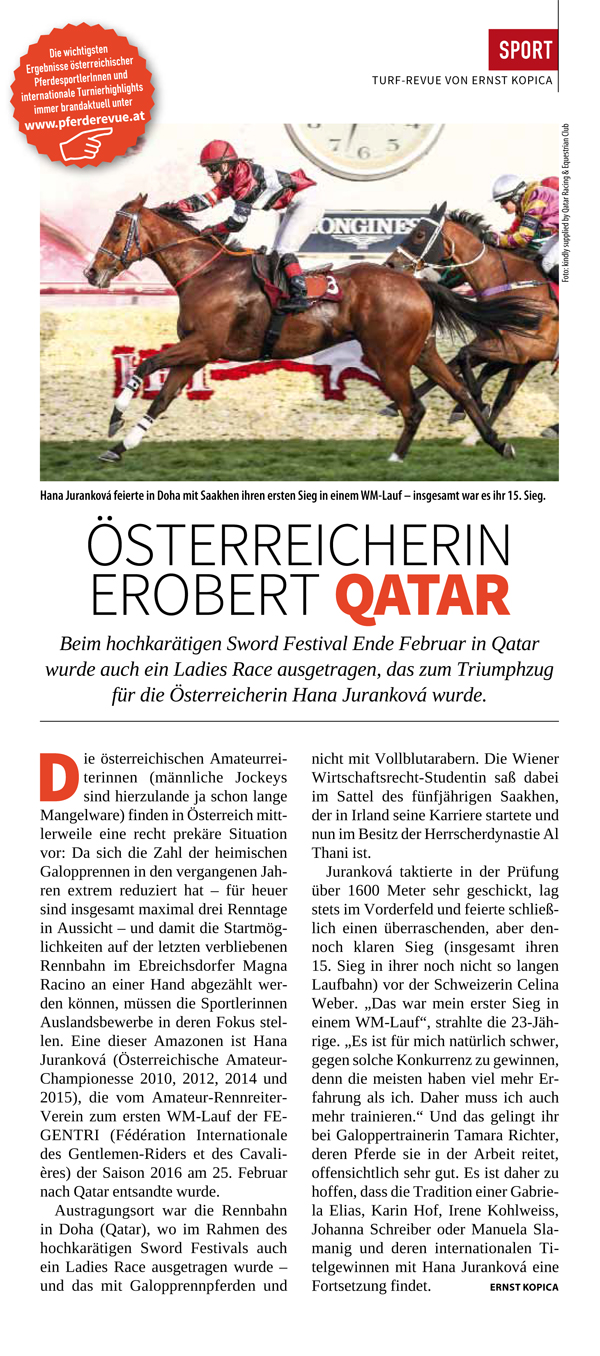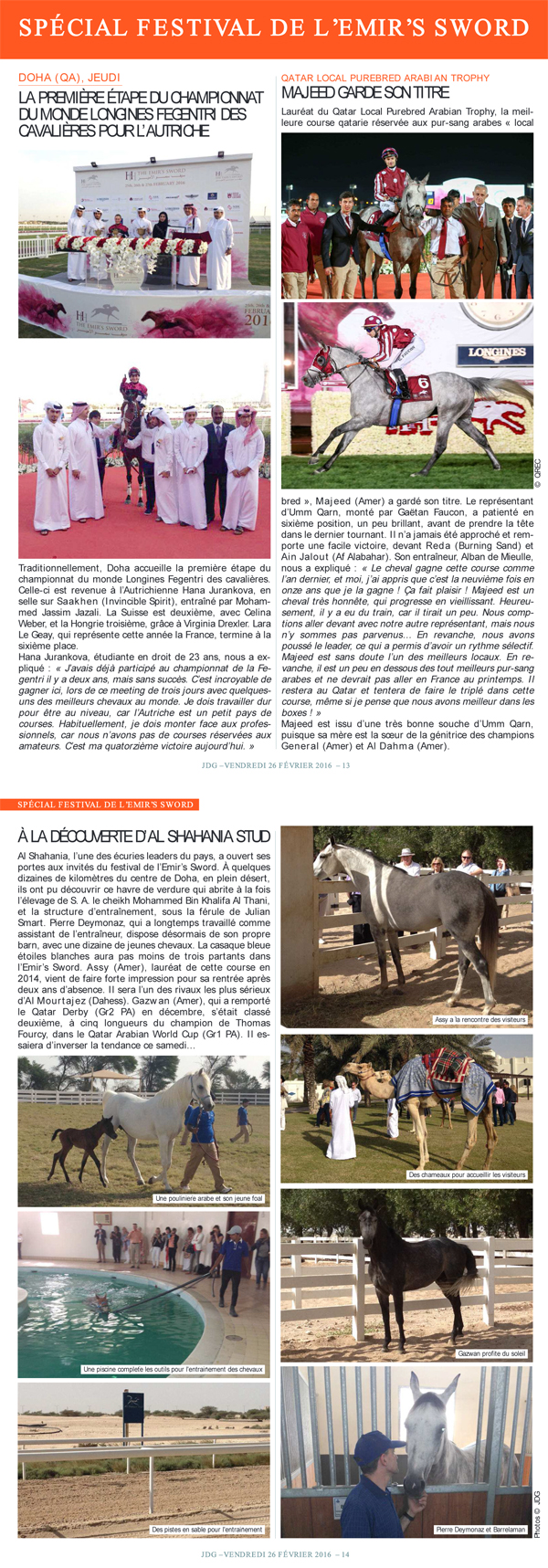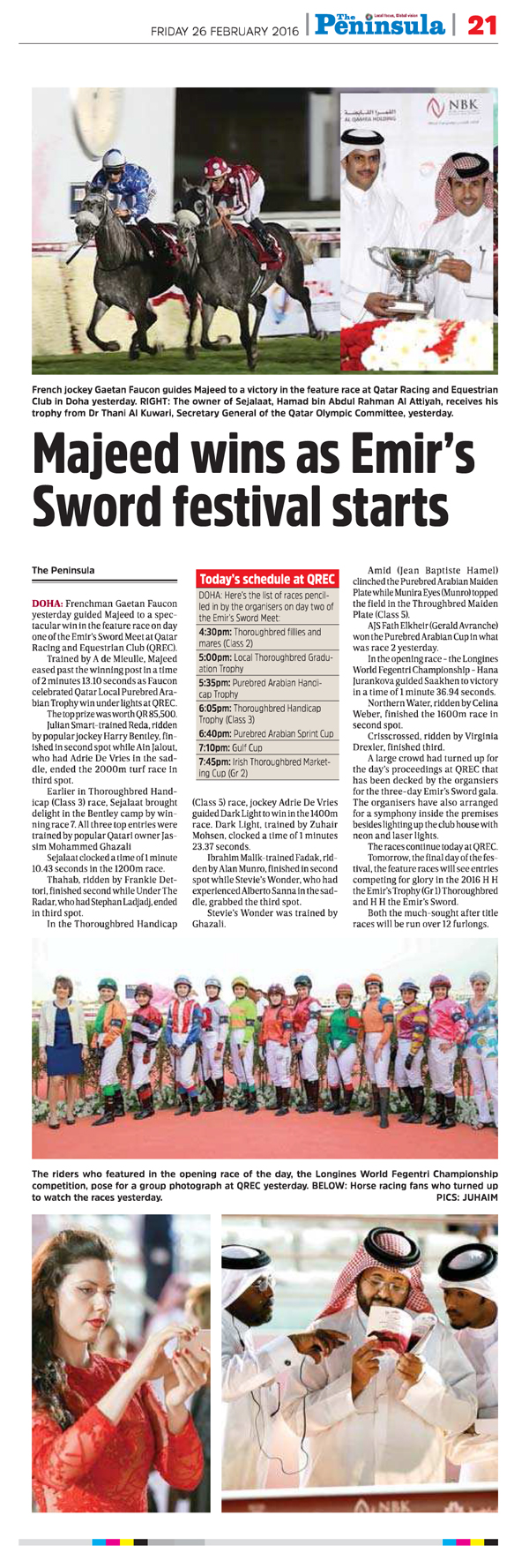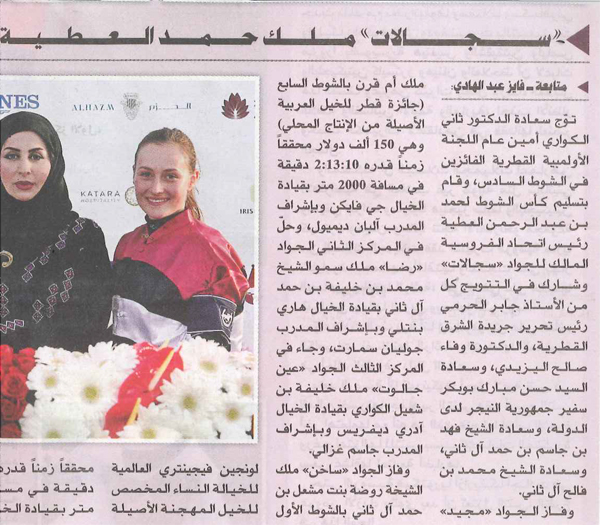Latest Races
-
1 Fegentri World Championship for Lady Riders December 7, 2025 Pisa, Italy See Results
#Results #Ladies' results -
3 FEGENTRI World Championship for Lady Riders November 2, 2025 Köln, Germany See Results
#Results #Ladies' results -
4 FEGENTRI World Championship for Gentlemen-Riders - Pr. 70 years FEGENTRI November 2, 2025 Rome, Italy See Results
#Results #Gentlemen's results -
6 The FEGENTRI Gentlemen's League Championship October 19, 2025 Wroclaw, Poland See Results
#Results #Jump results -
7 Fegentri World Championship - Mixed race - Cena Znacky Fitmin October 18, 2025 Most, Czech Republic See Results
#Results #Gentlemen's results #Ladies' results

